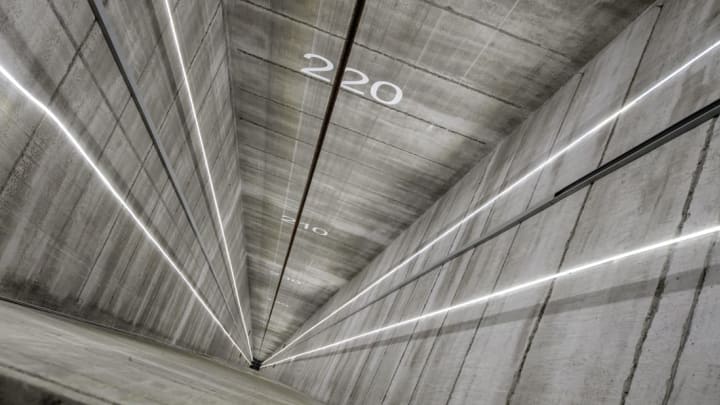Elevator company ThyssenKrupp has developed a "sideways elevator" known as MULTI. In many respects it's similar to a standard elevator—it's a car that's designed to move people between floors in buildings. But this elevator has two key engineering differences. First, it uses motors on tracks to move the cars, rather than a cable pulling the cars up and down. Second, the tracks themselves can rotate or be built in orientations that aren't just up and down. That last bit is what makes this so interesting.
In a conventional elevator setup, architects devote a columnar portion of the building to elevator shafts. Those are then outfitted with cabling and motors to move the elevator cars up and down between floors. There's plenty of fancy math engineers build in to optimize the availability and speed of those elevators. But typically, the biggest limitation is that for each elevator shaft, there is just one elevator car. (There are multi-car-per-shaft elevators known as "twin elevators," but the cars generally block one another in the shaft.)
MULTI allows multiple cars per shaft, with the ability to scoot cars sideways as needed, or even to build a zig-zagging shaft structure. This allows cars to get out of the way of each other, enabling all kinds of interesting algorithmic changes. The system could put multiple cars near high-traffic areas—and those areas might change based on time of day or other factors. Priority cars might be able to zip along, while others moved to the side to wait. A car might move sideways and enter another shaft, if that would create a faster path. Or imagine a dual-tower building—it could have a sideways elevator shaft (or many of them) to connect the towers. Imagine the time savings in traveling between upper floors of the two buildings, when such a linkage exists! As a broad concept, MULTI basically removes the idea of the elevator "shaft" and replaces it with something more like lanes on a road—and adds the ability to move along two axes rather than just one.
In the video below, Tom Scott visits a ThyssenKrupp testing tower to learn how it works. (He also makes it clear this is not sponsored content—it's a genuinely fascinating bit of engineering. It does seem the company is doing its public relations homework, though, as the first functional unit went online on June 22, 2017 in Rottweil, Germany.)
Behold:
If video isn't your thing, read up on the technology. While it will be many years before this kind of technology becomes commonplace, you may be able to tell your kids: "In my day, elevators only went up and down!"
